Foil Drive Gen 2 | Tips and Tricks for Setting Up and Riding
Tucker and Ryan share some tips that they wish they'd known when they first started foil driving so you can get on the water faster without accidentally causing any damage to your new Foil Drive unit. While the tips are primarily for the Foil Drive Generation 2, many also apply to the Assist Plus.
Have Patience
We know, we know. Your Foil Drive has just been delivered and your excitement is at level 11. You're ready to head to the beach, throw it together, and get in the water. Trust us- that will actually just slow you down, or even bring your session to a halt before it begins.
Stay home. You need a clean, quiet area where you can work without losing any screws or get distracted by the waves as they beckon to you. This assembly is just a bit technical, and you can do it wrong. Foil Drive has some great assembly videos on YouTube, and you'll want to let the one for your model walk you through the job.
Even if you've set up foils before, there are some different intricacies with the Foil Drive that you want to get right. Go through the Quick Assembly Guide before you open anything up, then use that and the video to guide you as you work through assembly. Get it right, and you could be heading to the beach in half an hour. Get it wrong, and you may be waiting for replacement parts to arrive before your first session.
Many of the screws are going into threaded inserts, so use the screwdriver that is provided and not an electric screwdriver so you don't strip anything out. Hand tight is good. I accidentally began to put in a screw that was too long, and since I was screwing it in by hand, I was able to realize my mistake and back it out before I caused any damage. Take your time and have fun with the assembly process.
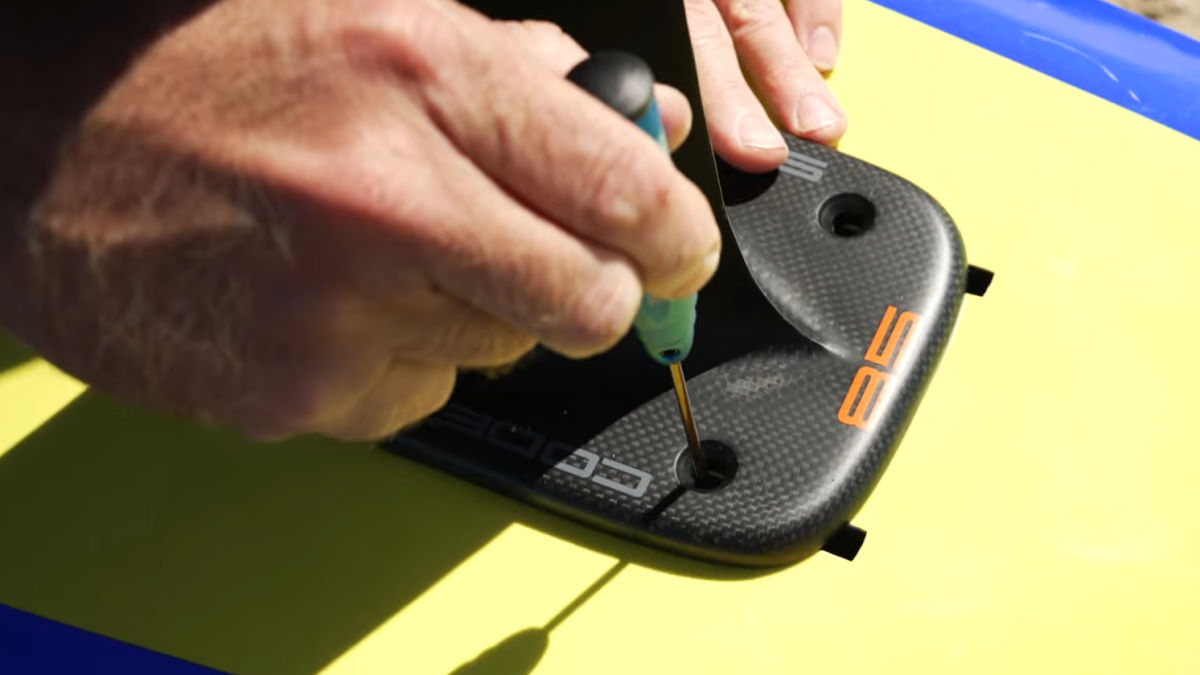
Set Up Ahead of Time
Make sure that you set up the Foil Drive power unit on your board ahead of time with the set screws. Foil Drive provides track nuts that have set screws in them, and this allows you to set up your foil on the board in the right position. You'll set up those track nuts and lock them in the bottom of the board, and when you put your Foil Drive unit on and then your mast on top of the Foil Drive, it's a lot easier to get those bolts lined up just perfectly. The next time you go out, you'll know exactly where you were last time. If you need to make adjustments, you can, or you can just leave it in the same spot and you know you'll have the same experience.

Remote Control Throttle Limiter
The throttle limiter comes preset at 100 percent out of the box, but not everybody's going to want 100. It's generally better to start a little lower, then you can always level it up. It's easy to do, even on the water. The remote control overview video shows you all the details for that, but basically you're going to press down on the thumb throttle and then hit the power button quickly once. Scroll down until you get to the throttle limiter setting, and then you can set that anywhere from 0 to 100 percent.
For lighter riders, especially on bigger boards, 75 - 80 percent is a nice starter because this Foil Drive does have a lot more thrust than previous models, almost like a full eFoil. You can get on foil pretty quickly, especially if there's a wave behind you, and it might be a little too much for a lightweight rider on bigger gear. If you're on smaller gear or you're a heavier rider, then you might want 90 - 100 percent. It also depends on your experience level and the conditions. When you're first learning, it's a lot easier to pull a full trigger than trying to engage a certain amount of throttle, so the throttle limiter can be really useful.
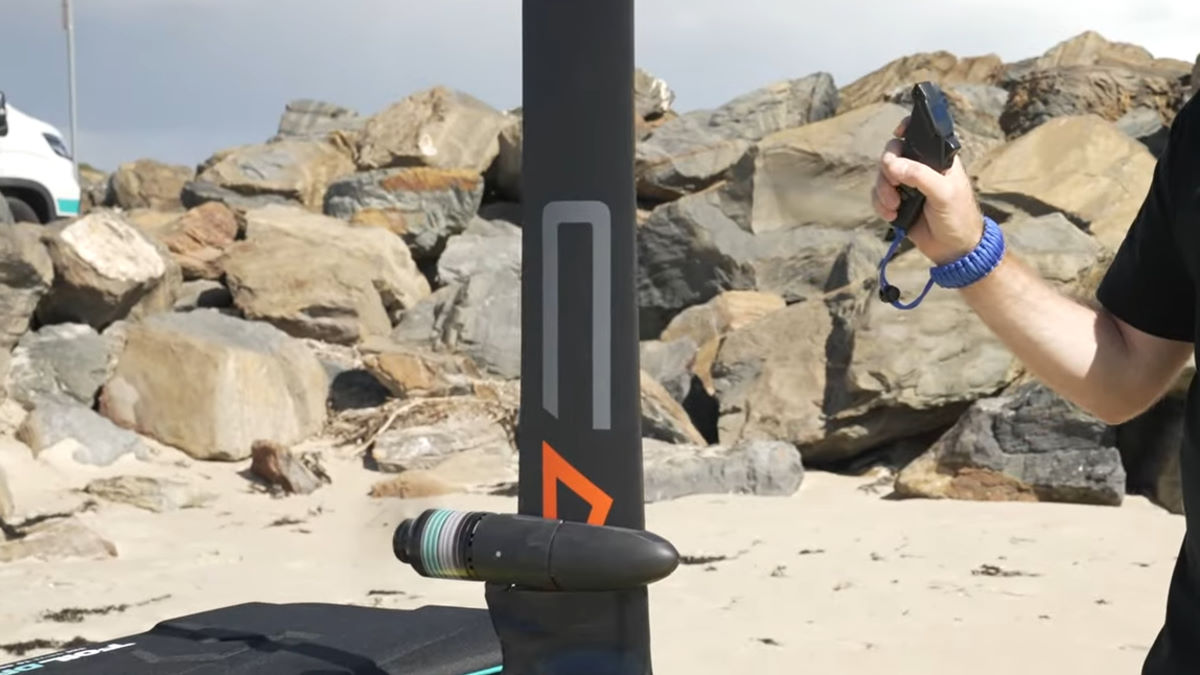
Safety
You're all set up and you're at the beach, ready to get into the water and go do it. Make sure your unit is off! It's really easy to hit that trigger on accident, especially when you're fighting through the shore break. The waves can hit the trigger or you can accidentally bump it, and that propeller is upside-down in the air before it gets deep enough, and that is dangerous. You always want to treat the motor unit as if it's on and could spin at any moment, so don't put your head or hands by it, but also play it double safe when you're not on top of the board. The motor should be off and the power should be off to the remote.
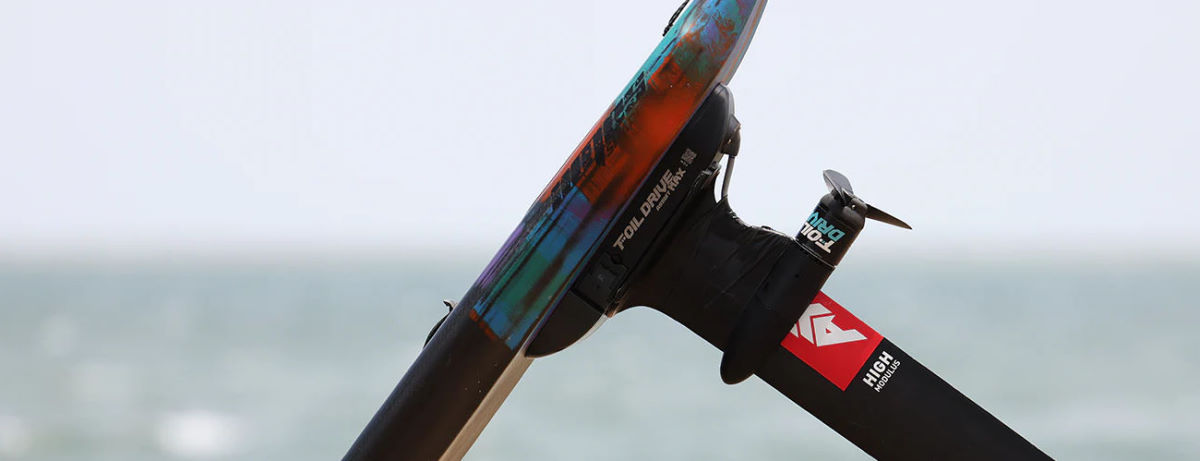
Always use a leash. Going a little longer than normal is a good idea because you don't want to be right next to the board when the prop is spinning and you fall. Getting the board a little further away from you when you fall is a good practice, though that's everybody's own decision. The foil board moves faster than you can swim, especially when there are waves and swell, so use a leash so that you don't end up in a bad situation, especially with how quickly you can get far offshore with a Foil Drive.
A flotation vest or impact vest and helmet are always a good decision if you feel so inclined.
Size Up
Consider using a bigger board and foil while you're getting a feel for your Foil Drive. When prone foiling, you'll motor in on your stomach or knees, then you'll need to get up and go pretty quickly, and the extra stability will help a lot. In choppy, messy, bigger conditions, having more length from the board and more efficiency really helps if you're skipping off chop and lifting off.
Also, because you get so much thrust from the motor and it gives you that extra lift, you'll need the extra forward space on the board to hold it down as you're motoring in so you don't nose up and have the motor come out. You want to keep the board level and planing and building speed, and then kick it up. Having a longer board makes that easier, especially in choppy conditions. If you are starting with a smaller board, go out into some flat water first to practice and figure out where you like your mast. It's probably going to be a few inches further back than normal.

Building Speed
To build speed, you'll want to release the board from the water. Initially, you may think the Foil Drive has so much power that you can just rip the trigger and foil right up. It will go 23 miles an hour, but that's on foil, not with the board touching the water. When you motor along with the board on the water, you have so much drag that there's a limit to the speed you can go. Even on a downwind board, your top speed is maybe 12 or 13 miles an hour just motoring with the board on the water.
You'll want to get your board to start to skip to remove that tension from the water. You don't want to immediately try to rock it up and ride it up on the foil because you're not going to have enough speed, especially on small foils or in challenging conditions. When you need to accelerate, either to make the foil lift or to catch a wave that's moving faster, getting the board skipping is really going to help you accelerate because, once you build that speed, the motor can compound the speed a little bit more and overcome that drag, and then you can lift off when you're ready just by leaning back.
Battery Settings
If you get a Foil Drive Assist Slim and you have the 28 volt Endurance battery rather than the Performance battery, that's a lower voltage and it's not going to have as much thrust. It feels more like the Assist Plus, but it has a longer battery life because of that design. If you're changing from the 40 volt to the 28, you'll need to have the app to change your settings to tell it to run the 28 volt, so plan some time to download the app and familiarize yourself with adjusting that setting. If you bought it with the Endurance battery, it should come ready to run out of the box, but if you're using both batteries, that is something that takes a minute to figure out how to do and get it all set up to work seamlessly.
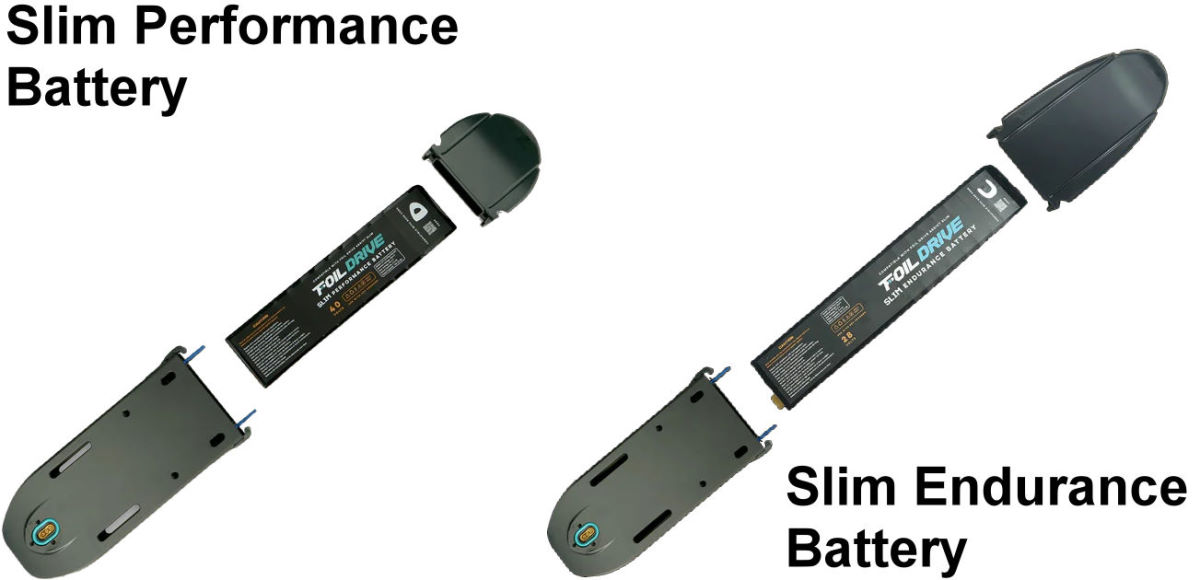
Things to Know or Avoid
Don't overcharge your battery and don't leave it fully charged all the time. It's not good for the battery and it's not good for battery safety. Don't overuse the batteries. If you're charging to full and then going out and emptying it, and you do that five times a day, you probably should buy a couple of batteries so you can rest one battery. The battery chemistry likes to rest in between charge/discharge cycles to maximize the life of your battery.
Obviously, you don't want to touch the propeller.
The Assist Plus had the travel battery which broke into two pieces so that you could fly with it. Currently, the Gen 2 is not going to be able to fly. It's something they're working on figuring out, but as of right now, all of the batteries in every model of the Generation 2 have too much capacity to be legal to fly. If you're planning on traveling, it's something you're going to have to ship rather than bringing it on the airplane with you. If you travel a lot, it's probably best to buy the Assist Plus with the travel bundle so you can travel without worry.
If you're interested in a Foil Drive, you really can't go wrong with the Max Power battery. It has the most thrust and the longest life. Why not have less range anxiety? You might only be planning on going out for an hour, but then maybe you decide you want to go out for two hours. You won't need to swap batteries; you can just stay out and ride.
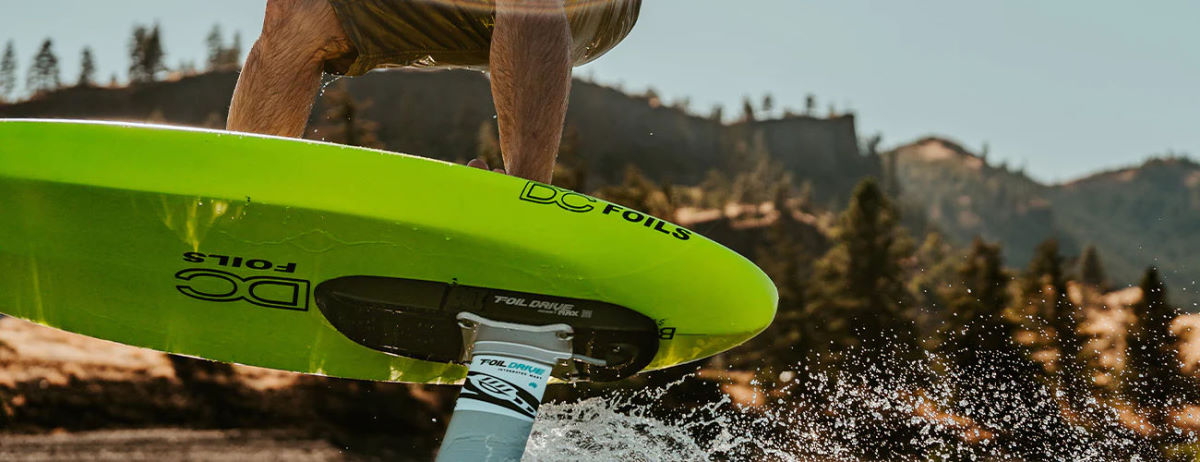
Remember to make sure you take some time go through the videos. You'll learn more about the capability of the Foil Drive and how in-depth some of the customization features are so you can get the most out of it. There's the boost, the throttle adjustment, the cruise control... some really useful features that can level up your experience, make it easier, and make it more fun.
If you have any questions, give us a shout in chat or give us a call, and we'll see you out on the water!
MACkite Subscription Links:
YouTube | Instagram | Spotify Oddcasts
Contact MACkite Below:
800.622.4655 | Kiteboarder@MACkite.com | LIVE Chat Messenger


Recent Posts
-
Kiteboarding Tricks | How To Do A Backroll Hat Drag
You can use a little creativity to switch up even the more basic tricks and add a little f …26th Jul 2024 -
KT Ginxu Step-Bottom and Foil Drive Systems | A Perfect Match?
The step-bottom feature of the KT Ginxu foilboards is a big help in releasing the surface te …24th Jul 2024 -
Starboard Ace Air Inflatable Wing Foilboard Review
It's Wing Wednesday, and today Tucker's got an inflatable foilboard, the 2024 Starboard Ace …23rd Jul 2024




